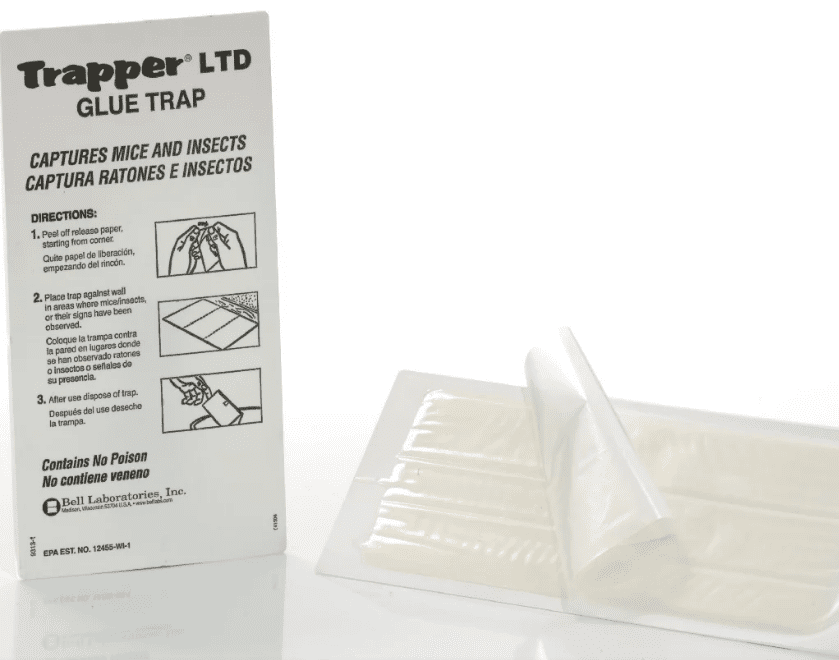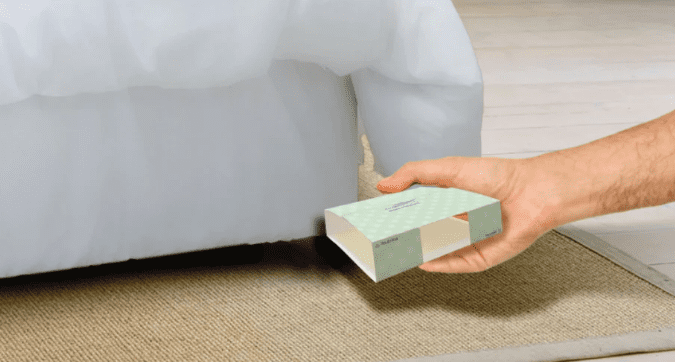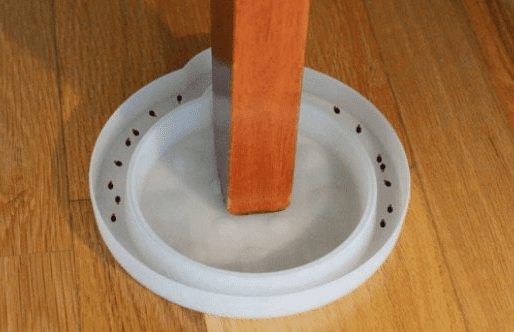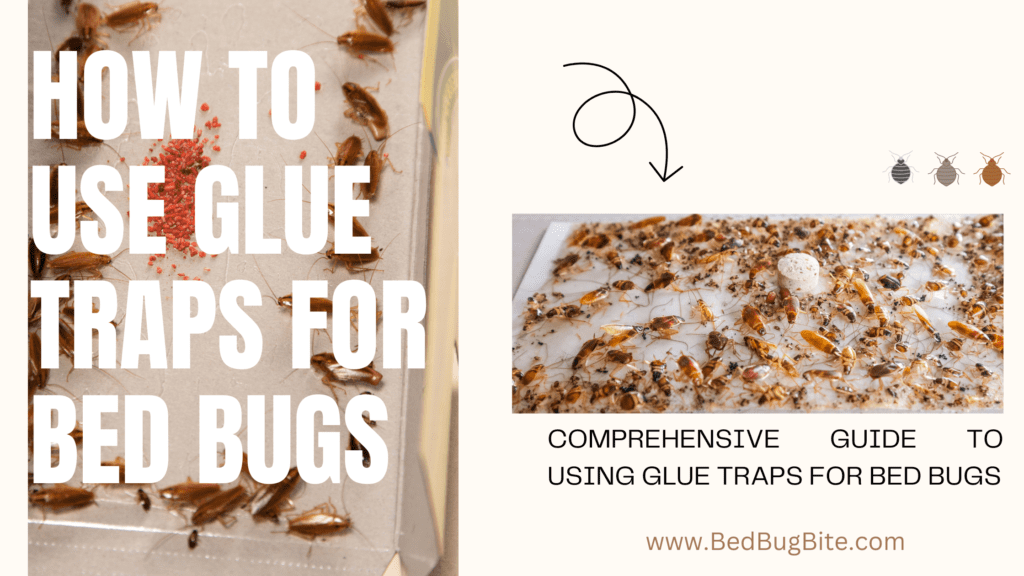Introduction:
Are you tired of those annoying bed bugs causing sleepless nights and turning your home into a battlefield? Do you wish to regain control over your living space and restore peace and comfort? Bed bugs, tiny nocturnal insects that feed primarily on human blood, have been a constant menace to households globally. The problem with these uninvited guests is their tenacity. They are difficult to eliminate, and their bites can lead to itching and even allergic reactions.
In this article, we focus on one of the safest and most effective ways to deal with these pests – the use of glue traps. You might be asking, “why glue traps?” Well, aside from being cost-effective and easy to use, glue traps offer a non-toxic solution to your bed bug problem, making them an ideal choice for homes with children and pets. Moreover, they provide a clear indicator of an infestation, allowing you to monitor and manage the situation effectively.
Throughout this guide, we’ll walk you through everything you need to know about using glue traps to combat bed bugs. From understanding how these traps work and the different types available. To choosing the right location for placement and integrating them with other bed bug control methods – we’ve got you covered. We’ll also highlight safety precautions and indicate when it might be time to seek professional help.
If you’re ready to banish those bed bugs and reclaim your home, let’s dive in. Let’s learn how you can make the most of glue traps as an effective solution. Trust us, bed bugs won’t stand a chance!
Why Use Glue Traps for Bed Bugs?
So, why should you consider using glue traps for bed bugs? Simply put, these traps provide an accessible, efficient, and environment-friendly solution to your problem. They operate on a simple yet effective mechanism – by capturing and retaining bed bugs as they attempt to traverse across the trap.
One of the primary benefits of glue traps is their ability to function continuously without needing regular replacement or maintenance. These traps are essentially silent sentinels. Constantly monitoring for bed bug activity and providing a visible count of the captured pests. This feedback is crucial as it helps you determine the severity of your infestation and assess the effectiveness of your control efforts.
But there’s more. Glue traps stand out for their safety and non-toxicity. Unlike chemical treatments that pose potential health hazards, especially for homes with children or pets, glue traps offer a safer alternative. You don’t have to worry about harmful residues or exposure to toxic substances when using these traps.
Moreover, glue traps are quite versatile. They can be placed in various locations around your home, from your bedroom to your living room, offering comprehensive coverage against these night-time invaders.
To sum up, using glue traps for bed bugs can be a game-changer. They are an affordable, safe, and reliable option that could be a key component in winning your battle against bed bugs. Let’s take a closer look at the different types of glue traps you can choose from and how to use them effectively in the upcoming sections.
Types of Glue Traps for Bed Bugs
When you venture into the realm of bed bug control, it’s essential to know that not all glue traps are created equal. Various types are available in the market, each with its unique features and advantages. Let’s unravel the three main categories:

Sticky Boards: Sticky boards are the most common type of glue trap you’ll come across. They typically consist of a flat surface coated with a sticky adhesive that captures bed bugs as they traverse the board. These traps are versatile and can be placed under furniture, along baseboards, or near known bed bug hotspots. They are user-friendly and affordable, making them a popular choice among homeowners.

Encasement Traps: As the name suggests, encasement traps are designed to be placed around the legs of your bed or other furniture. They ‘encase’ the furniture leg, trapping bed bugs as they attempt to climb up or down. These traps are particularly useful because they prevent bugs from reaching you while you sleep, offering a layer of protection.

Coaster Traps: Coaster traps work similarly to encasement traps but are designed like a coaster. They have a textured outer rim for bugs to climb and a slick inner wall to prevent their escape. These traps can be placed under the legs of furniture, proving effective both in trapping bugs and preventing them from reaching their human targets.
The choice between these traps largely depends on your specific needs, budget, and the level of infestation. By understanding the unique characteristics of each trap, you can make an informed decision that will help you tackle your bed bug problem head-on. Now, let’s move onto how you can use these traps most effectively.
How to Use Glue Traps Effectively
Using glue traps for bed bugs might sound straightforward, but for maximum effectiveness, it’s crucial to follow a systematic approach. So, how can you get the most out of these tools? Here are some key steps to consider:
Choosing the Right Location for Placement: Knowing where to place your traps is half the battle. Bed bugs typically hide near their human hosts, making bedrooms their prime hotspot. Consider placing traps under your bed, around furniture legs, along baseboards, or in crevices where you suspect bed bug activity. Remember, bed bugs are nocturnal, so focusing on areas where you sleep, or rest can yield significant results.
Installing the Traps: Once you’ve decided on the locations, it’s time to set up your traps. For sticky boards, simply place them in the desired locations, ensuring the adhesive side is up. If you’re using encasement or coaster traps, fit them around or under the legs of your bed or other furniture. Make sure all traps are securely positioned and unlikely to be disturbed.
Ongoing Monitoring and Maintenance: Monitor your traps regularly after they are placed. Check your traps every few days for signs of bed bugs and replace them when they become full or less sticky. This ongoing vigilance will allow you to assess the extent of the infestation and the effectiveness of your trapping strategy.
Remember, while glue traps are an efficient tool in your bed bug control arsenal, they’re not an instant solution. Patience and persistence are key to this process. Continue with regular monitoring and make necessary adjustments to your strategy based on your observations. Let’s also delve into some safety precautions you need to follow when handling these glue traps.
Important Safety Precautions
While glue traps are a non-toxic and generally safe bed bug solution, it’s still crucial to handle them responsibly to ensure a risk-free experience. Here are some essential safety tips to keep in mind:
Safe Handling of Glue Traps:
The traps have a potent sticky coating that can prove difficult to eliminate upon contact with skin, clothing, or other materials. It’s crucial to consistently handle the traps by their edges and make an effort to steer clear of the adhesive surface. If accidental contact occurs, you can typically safely eliminate most adhesives using vegetable oil or a commercial adhesive remover, followed by warm water and soap.
Considerations for Homes with Children and Pets:
When you have little ones or pets at home, it becomes crucial to position traps out of their easy reach. Children might show curiosity towards these unfamiliar items, and pets could attempt to chew on them. To avert unwanted interactions, it’s advisable to position traps in hidden and hard-to-reach spots. If encasement or coaster traps are being utilized, make sure they are securely placed around furniture legs to prevent any displacement.
Always bear in mind that maintaining safety is important when tackling a bed bug issue. While glue traps provide a safer option compared to chemical treatments, their proper use and handling are still necessary. Having covered the fundamental aspects of using glue traps and ensuring safety, let’s now delve into how these traps can be combined with other methods of bed bug control for a more complete strategy.
Integrating Glue Traps with Other Bed Bug Control Methods:
While glue traps can be a powerful tool in your bed bug control strategy, they’re often most effective when used in conjunction with other methods. So, how can you enhance your bed bug eradication efforts?
Using Glue Traps in Conjunction with Insecticides:
Although glue traps can catch a significant number of bed bugs, some bugs may avoid them or find alternative paths to their hosts. In these cases, incorporating carefully selected insecticides can be beneficial. However, always remember to use these substances responsibly. Read and follow the label instructions to minimize risks. And remember, not all insecticides are safe for all environments, particularly homes with children or pets.
Complementing Glue Traps with Non-Chemical Methods:
In addition to insecticides, non-chemical control methods can also be highly effective. Techniques such as heat treatment, cold treatment, or thorough vacuuming can be used to treat infested areas. For instance, bed bugs are extremely sensitive to temperatures. A heat treatment involving a thorough steam cleaning of your mattress and other infested areas can kill both adult bed bugs and their eggs.
In essence, a comprehensive and multi-faceted approach to bed bug control can greatly enhance the effectiveness of your efforts. By combining glue traps with other suitable methods, you increase the odds of success and move one step closer to a bed bug-free home. Let’s now explore when it might be necessary to seek professional help in this battle against bed bugs.
Knowing When to Seek Professional Pest Control and Selecting a Reliable Service:
There might come a point when your best efforts fall short, necessitating the involvement of experts. So, what are the indications that it’s time for professional pest control, and how can you choose a dependable service?
Recognizing When Professional Pest Control is Necessary:
If your consistent use of glue traps and other bed bug control approaches shows minimal results, it could be a good time to consider seeking professional help. Other signs may include an unrelenting or escalating bed bug population. A widespread infestation spanning multiple rooms, or recurring bites despite your control endeavors. Keep in mind that bed bugs reproduce rapidly, underscoring the importance of timely intervention to avert a full-fledged infestation.
Selecting a Trustworthy Professional Pest Control Service:
While making a decision about a pest control service, ensure you go for a reputable provider with established expertise in bed bug control. Read through reviews, solicit referrals, and don’t hesitate to inquire about their techniques and safety protocols. A reliable service will openly communicate about their procedures. They offer explicit instructions for pre and post-treatment phases. They will present a follow-up plan to guarantee complete eradication of the bed bug problem.
Even the most seasoned DIY-ers sometimes need a helping hand, and there’s no shame in turning to professionals when the situation calls for it. They have access to specialized equipment and professional-grade treatments that can effectively rid your home of bed bugs. In the final section, we’ll provide a quick recap and some parting thoughts.
Conclusion
The journey towards a bed bug-free home may seem daunting, but with the right tools and strategy, it’s an achievable goal. Glue traps for bed bugs provide an effective, affordable, and safe solution that can play a pivotal role in your control strategy. From understanding how they work to selecting the right type and using them effectively, we’ve covered all you need to know about these handy tools in this comprehensive guide.
Remember, while glue traps are an excellent standalone solution, they are often most effective when integrated with other bed bug control methods. Always adhere to safety precautions when handling these traps and know when it’s time to seek professional help.
In the end, a bed bug-free home is more than just a comfortable living space; it’s about the peace of mind that comes with knowing you and your loved ones are safe from these pesky invaders. As we wrap up, take these insights to heart, and reclaim your home. The battle against bed bugs might be challenging, but with patience, persistence, and the right approach, victory is within your grasp. Good luck, and here’s to peaceful, bug-free nights ahead!




